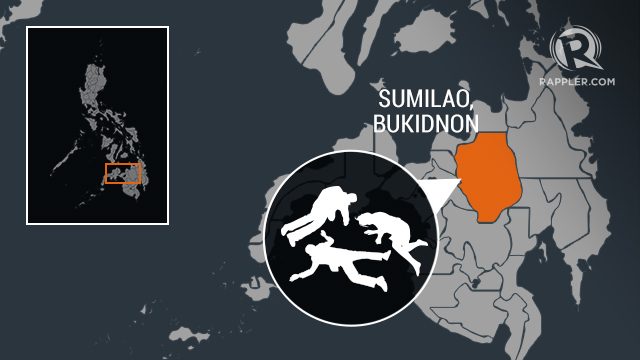SUMMARY
This is AI generated summarization, which may have errors. For context, always refer to the full article.

CAGAYAN DE ORO, Philippines – Three members of an indigenous people’s group were killed and 3 others hurt during a land claim-related scuffle with security guards of a ranch in Sumilao, Bukidnon, on Tuesday, July 12.
Sumilao Police chief Felipe Yap said the casualties and wounded were part of a group of 50 from the Inalsahan Indigenous People’s Organization (IPO), which is claiming the 2,400-hectare ranch managed by Ramcar, Incorporated.
Senior Police Officer 2 Lorecito Pitogo, Sumilao police chief investigator, said the group entered the ranch by digging under the perimeter fence, and set up tents inside the area.
Fourteen guards from the Tagbagane Security Agency, in charge of securing the ranch, confronted the group, leading to a heated argument.
The security guards reportedly opened fire on the group using their shotguns, killing Raymar Mayantao, the son of IPO leader Bae Merlita Mayantao; Rogen Sindangan, and Cenon Nacaytona. Lilian and Albert Mayantao, and Ely Daliti were wounded.
The police arrested the head guard, Jonathan Ursaiz.
In March 2012, Ramcar figured in a controversial land conflict involving farmers from the Xavier Farms Agrarian Reform Beneficiaries Association (XAFARBA), also from Sumilao.
XAFARBA farmers condemned Ramcar’s illegal occupation of 983 hectares of land already covered by the agrarian reform program. A Certificate of Land Ownership Award (CLOA) covering 983 hectares of the 1,365-hectare Ramcar ranch in Sumilao was issued to 550 farmer-beneficiaries as early as 1998.
Land conflicts arise because of the apparent lack of coordination among the concerned governments agencies – the Department of Environment and Natural Resources (DENR), Department of Agrarian Reform (DAR), and the National Commission on Indigenous People’s (NCIP).
The DENR issues a 25-year Forest Land Graze Management Agreement to ranchers, while the DAR issues a CLOA usually to workers of the land. The NCIP, for its part, issues a Certificate of Ancestral Domain Territory (CADT) to the original settlers of the area awarded by the DENR. All these result to overlapping land claims and ultimately, land conflict. – Rappler.com
Add a comment
How does this make you feel?
There are no comments yet. Add your comment to start the conversation.